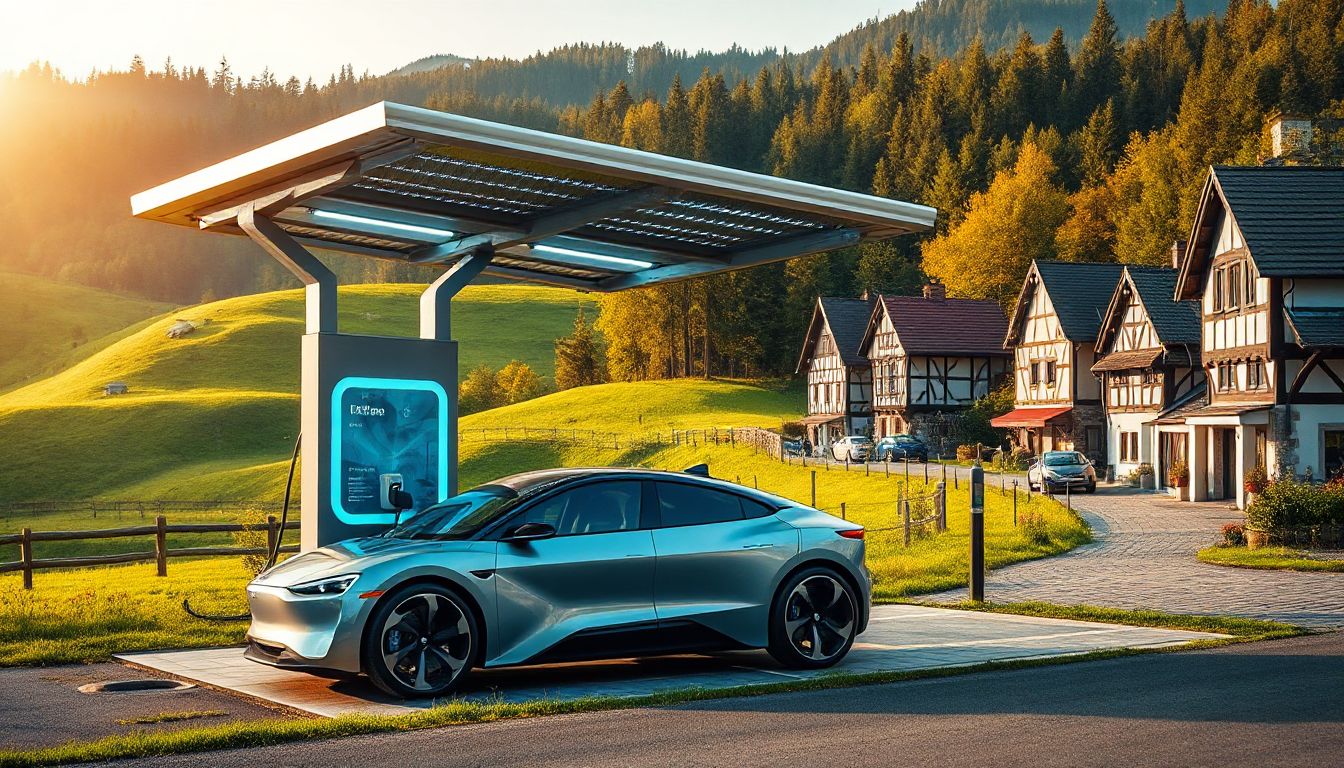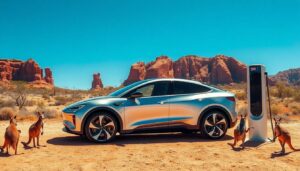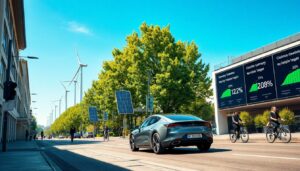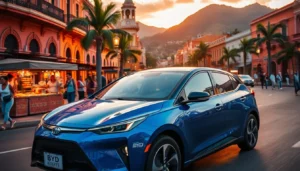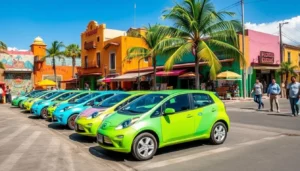Introduction
Germany has become a leader in electric mobility. Its focus on sustainability pushes the country to build a strong charging network for EVs. As more people switch to electric cars, a reliable charging system becomes vital. This guide explores Germany’s current charging setup, policies, new tech, and what the future holds for EV charging across the country.
Germany’s Electric Vehicle Market and Charging Infrastructure Overview
Current State of EV Adoption in Germany
Germany is quickly becoming an EV hotspot. Last year, EV registrations increased sharply, making up almost 15% of new car sales. Experts see this number doubling within the next five years. Government incentives, like tax breaks and subsidies, drive this growth. Plus, stricter pollution rules make electric cars an attractive choice for consumers.
Overview of Germany’s Charging Infrastructure
There are about 70,000 public charging stations spread across the country. Urban cities like Berlin and Munich have the highest density. Suburban and rural areas, however, still have fewer options. Most charging points are either private, installed at homes, or public, supporting EV owners on the road. Public sites are often located at shopping centers, highways, and service stations.
Government Initiatives and Policies to Support Charging Infrastructure
Germany has ambitious plans to grow EV charging. The Climate Action Plan sets a target of 1 million charging points by 2030. The government funds grants and subsidies to support this expansion. New rules make fast charging more common and ensure stations can connect with different car brands smoothly.
Types of Electric Vehicle Charging Stations in Germany
Level 1 Charging – Home and Residential Charging
This is the simplest form of charging, usually done at home with a standard outlet. It’s slow but perfect for overnight charging. Many EV owners install a dedicated home charger for convenience. While it’s not ideal for quick trips, it’s affordable and easy to set up.
Level 2 Charging – Public and Semi-Private Stations
Level 2 chargers are faster and found at public locations like parking lots and workplaces. They can charge a car in 3-8 hours. Several brands make these stations, and different networks operate them, such as EnBW and Allego. These stations suit daily charging needs.
DC Fast Charging and Ultra-Fast Charging
Fast chargers are essential for long trips. They can add 80% charge in about 30 minutes. Germany is expanding these stations along highways and busy routes. Major networks like Ionity and Tesla’s Superchargers lead this effort. The goal is to make long-distance travel as quick as filling up a gas tank.
Innovative Charging Technologies
Germany is testing new ways to charge EVs. Wireless charging allows cars to charge without cables, just by parking over a pad. Dynamic charging roads let vehicles recharge while moving, cutting down stop-and-go charging. Vehicle-to-Grid (V2G) tech lets EVs supply power back to the grid, helping balance energy loads. Plus, integrating solar and wind energy with chargers lowers emissions even more.
Key Players and Network Operators in Germany
Government and Municipal Initiatives
Local governments team up with private firms to build charging spots. Cities like Hamburg run projects to make charging accessible, especially in neighborhoods lacking stations.
Major Private Sector Companies and Network Providers
Leading companies include Ionity, EnBW, Allego, and Tesla. They work to expand coverage and improve user support. These networks are making it easier to find a charger and pay through apps or cards.
Collaborations and International Partnerships
Germany is working with other EU nations to create cross-border charging. This makes traveling through Europe easier for EV drivers. German tech firms also partner with global companies to bring new charging solutions.
Challenges and Opportunities in Germany’s EV Charging Ecosystem
Infrastructure Gaps and Regional Disparities
Some rural areas still lack enough stations, limiting EV travel. To fix this, Germany plans to boost infrastructure in less-developed regions. Equal access is key for mass adoption.
Technical and Standardization Issues
Different charging networks often use incompatible systems. Germany aims for standard plugs and communication tech that work everywhere. Industry groups now push for uniform standards to make charging simple for everyone.
Environmental and Urban Planning Constraints
Placing chargers in city centers can be tricky due to limited space and aesthetic concerns. Cities are exploring ways to hide chargers or make them blend into surroundings. This ensures infrastructure doesn’t spoil the look of neighborhoods.
Business Models and Economic Factors
Charging costs are still a big topic. Some stations charge per kWh, others per minute. Some businesses see EV charging as an extra service for customers. Public-private partnerships also help fund new stations. Innovative models like mobility-as-a-service (MaaS) show promise for integrating EVs into daily life.
Future Opportunities
Germany plans to grow ultra-fast charging networks on major routes. Smart grids and renewable energy will power stations, lowering carbon footprints. Digital apps will make locating, paying, and scheduling charges easier than ever.
Future Trends and Developments in German EV Charging
Government Roadmap and Policy Outlook
The government intends to have at least 10 million EVs on the roads by 2030. Policies will encourage fast and ultra-fast chargers and promote renewable energy integration.
Technological Innovations on the Horizon
Expect faster chargers with even higher power, reducing fill-up times by half. AI and IoT technology will help manage networks better, avoiding busy or broken chargers. Battery tech will also improve, making EVs cheaper and more reliable.
Increasing Role of Renewable Energy Integration
Germany aims to power charging stations with solar and wind energy. This aligns with its energy transition plan. The shift will cut emissions and make EVs even greener.
Electric Mobility in Urban and Rural Areas
Cities are planning to support EV use with dedicated lanes and more charging points. Rural areas benefit from cross-border charging routes, making long trips easier. This expansion will make EV driving possible anywhere in Germany.
Consumer Engagement and Personalization
Mobile apps will show real-time charger status and let users compare prices. Virtual assistants and smart chargers will automate the charging process. Off-peak charging incentives encourage more eco-friendly habits.
Conclusion
Germany is making great strides in building a comprehensive EV charging network. The country’s combination of policies, innovation, and investments is shaping a future where electric cars will be everywhere. Whether you’re a driver or a business, understanding this evolving landscape can help you benefit from Germany’s leadership in electric mobility.
By staying informed about new chargers, tech, and policies, you can plan your trips better and contribute to a cleaner environment. Germany’s push toward sustainable transport is a model other nations can follow. As more fast-charging options come online and renewable energy becomes central, the future of EV charging looks bright—and it’s happening right now.
